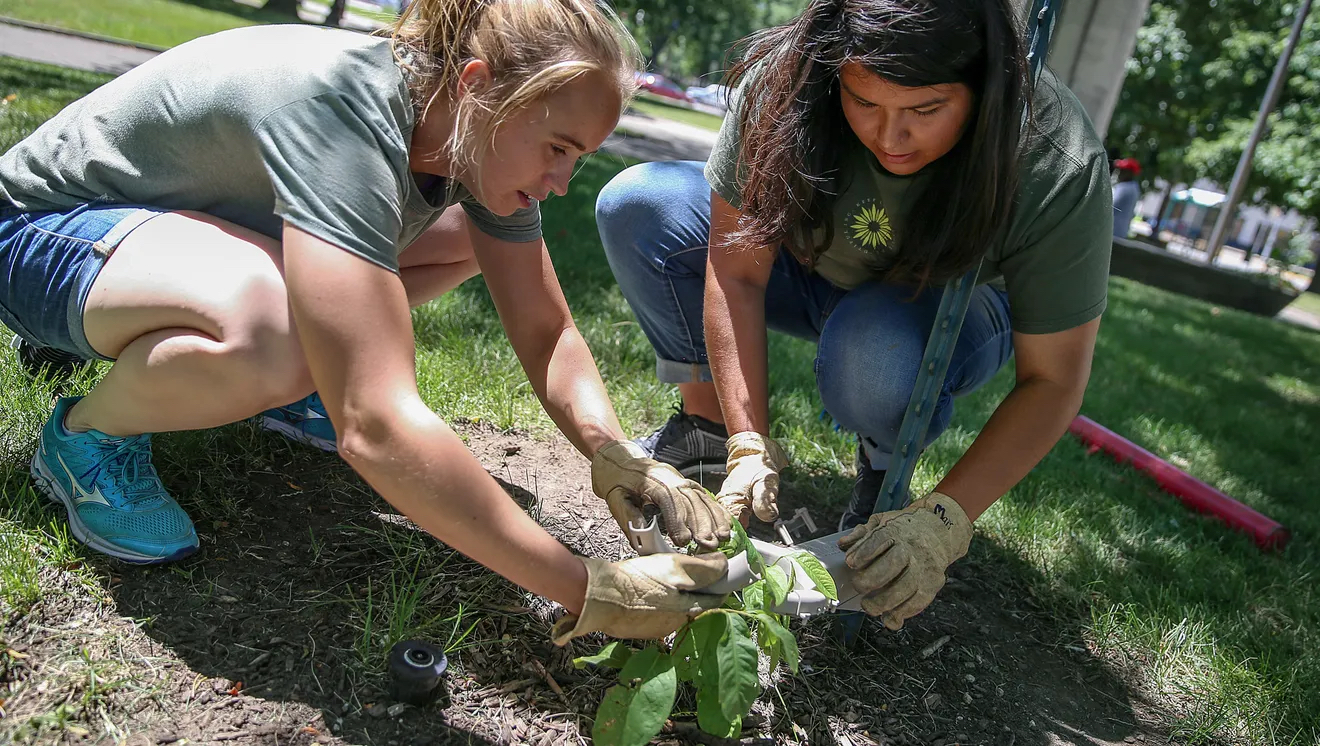An environmental and community nonprofit, Keep Indianapolis Beautiful (KIB) engages diverse communities to create public places that help people and nature thrive. KIB plants trees, restores habitats, creates pocket parks, and holds litter cleanups throughout .
KIB began as the Indianapolis Clean City Committee (ICCC) in 1976. Established under Mayor , the anti-litter agency had only one employee. As the first northern, cold-weather city in the Keep America Beautiful (KAB) Clean Community System, it used public awareness campaigns and cleanups to reduce litter. It also contributed to national KAB research on how to handle solid waste before it became litter.
In 1977, the ICCC launched the “Can It!” ad campaign, in which the mayor used a basketball shot, the “Hudnut Hook,” to “put litter in its place.” The ICCC led school programs, planted flowers, provided dumpsters for cleanups, and started the nation’s first full-time municipal court just for environmental cases.

Hudnut believed the agency could have a greater impact outside of city government, so the ICCC became an independent nonprofit in 1981. Hudnut, however, continued working closely with the ICCC, and KAB asked him to deliver the keynote address at its national conference in 1985.
In 1988, KAB recognized Indianapolis as the “Cleanest City in America” for populations of 500,000 and over. That same year, the ICCC started Cash for Trash, Indy’s first recycling program. Six recycling centers paid residents for aluminum cans, glass, and newspapers.
While litter remained a focus for the ICCC, in 1995 it began to engage neighborhoods in grassroots community improvement projects. Project 180°/ IPL (Indianapolis Power and Light, known as as of 2021) Revive a Neighborhood sought to rehabilitate neighborhoods through landscaping, cleanups, and home improvement. Accordingly, the ICCC changed its name to Keep Indianapolis Beautiful in 1997.
Project 180° grew to include community gardens and parks. In 2006, the program became IPL Project GreenSpace. Through Project GreenSpace, KIB works with neighbors to transform vacant lots into community gathering places with plantings, seating, pathways, nature-based play equipment, and more.
KIB introduced its Adopt-A-Block program, which began as Operation My Town, in 2001. It was the brainchild of City-County Councilor Lonnell “King Ro” Conley, who believed getting people to keep their city clean would be most effective in their own streets and alleys. Through Adopt-A-Block, KIB provides free tools and resources so residents, schools, and businesses can keep their blocks free of litter. By 2012 the program had over 500 block captains, with 1,000 by 2020.
The Great Indy Cleanup allows residents to plan litter cleanup events in public spaces. Residents sign up for a date, and KIB provides supplies and coordinates with the city and landfill for dumpsters and trash disposal. KIB also hosts focus events that make garbage trucks and hundreds of volunteers available to address heavy litter and accomplish placemaking projects, such as plantings or public murals.
Although KIB hired its first full-time tree-planter in 1998, its major tree work began in 2006, when it launched its community forestry program with the city. Mayor announced a goal to plant 100,000 trees in the next decade, double the amount KIB had anticipated. KIB tracks about 50,000 trees planted since 2006, most of them native to Indiana, and has become the largest tree-planting nonprofit in the city. KIB’s volunteers and certified arborists plant over 3,000 trees each year.
To maintain those trees the first three years after planting, KIB hires dozens of teens for the Youth Tree Team (YTT) each summer. Meanwhile, college students on KIB’s Urban Naturalist team lead habitat restoration projects along Indy’s waterways.
KIB works closely with the on tree plantings, habitat restoration, trash disposal, and environmental sustainability. It also engages local companies, sometimes in large-scale events. KIB helped launch its first Lilly Day of Service in 2008, with over 8,400 volunteers doing environmental and beautification projects in one day.
Residents request most KIB projects through applications. To identify places that could benefit, KIB’s outreach team uses both community input and Geographic Information System (GIS) mapping. Such maps show areas with low tree canopy levels, high social vulnerability, high litter complaints, and limited experience with KIB.
KIB works to balance the environmental and social goals of Indianapolis. Through all its programming, KIB considers how it can improve the natural aspects of a neighborhood as well as other quality-of-life factors, such as adding art and connecting residents with other resources and partners.

Help improve this entry
Contribute information, offer corrections, suggest images.
You can also recommend new entries related to this topic.